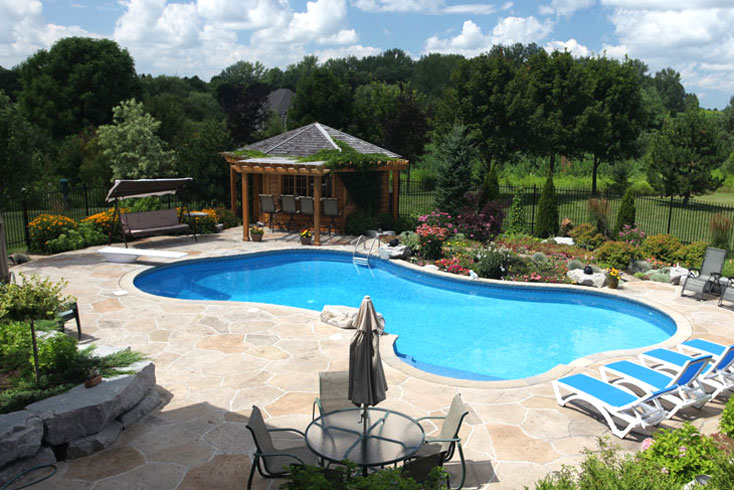Pattern of Success

The family’s concrete business, TRI CON Concrete Finishing Co. Ltd., focused on finishing and performing large industrial commercial concrete flooring projects, including General Motors car plants, Terminal 3 at Pearson International Airport, and large distribution warehouses for Walmart and Home Depot.
As the business grew, Joe’s oldest brother noticed the growing popularity of stamped concrete (which involves applying colour and texture to make concrete look like natural stone, brick, cobblestone or even wood). The brothers brought the trademark name Patterned Concrete® to Ontario in 1987, and by 1990 they had founded Patterned Concrete® Ontario Inc., and named Joe the president.
It wasn’t long before clients were lining up to have Joe and his team design and install driveways, entranceways, patios and even pool surfaces with concrete designed to look like natural stone, brick, cobblestone or even wood.
While Joe’s current team tally is between 60 or 70 people, he still gets involved in every job, at least in some way. “If I’m not there in person, I’m involved behind the scenes,” he says. Helping clients zero in on the right design is one of the most rewarding parts of the process for Joe. “I tend to be able to recommend tones and finishes that our customers really enjoy,” he says. “The end result isn’t just about being able to put a pattern on concrete. It’s about creating something unique that reflects the homeowner and suits the setting.”
While it’s growing in popularity, Joe still encounters some misperceptions about stamped concrete installed by Patterned Concrete® . “There have been situations where a high-end pool company goes to see a client with a multi-million dollar house,” says Joe. “They say they definitely want a natural stone, then they look through the book of examples and choose a stamped concrete installation by Patterned Concrete®.”
“They’re amazed by how authentic the concrete looks,” he says. Much of the credit goes to the company’s exclusive stamping tools. “Because a lot of our stamps are made from natural stone, they have a deeper imprint, so they allow us to do grouting,” he explains. “It just takes stamped concrete to another level, where all of a sudden it does not look like stamped concrete.” He adds, “Plus, the natural stone means that the textures and details of the source material are reflected in the final product.”
Eye-catching design is only part of the story. To deal with the exacting science of these architectural projects, Joe’s team is made up of licensed contractors who take additional training to stay ahead of the pack. “There is ongoing training, which is critical because when you’re dealing with architectural concrete, it’s kind of a one-shot deal,” says Joe. “Basically it’s got to be done well the first time.” When a project is done right, says Joe, stamped concrete will last a very long time. “We just did a home show and a customer came up and showed me a picture of his driveway, which was still in great shape. He said, ‘You did my driveway in 1993!’” Looking ahead, Joe anticipates training more contractors. “I also want to develop new pattern-stamping tools and finishes,” he says, an interest that just might carry on to the next generation. “I have two kids and they’re just getting to the age of being in the business. They’re intrigued with the stamping tools and making new designs.” Technological advances are impacting the business. Joe has started installing a system for some projects that senses the weather and increases a driveway’s temperature to melt snow and ice. “That means no salt, no scraping, no weathering from the winter,” says Joe. “Homeowners worry less about winter weather and your concrete installation endures less wear. It’s a win/win.” For Joe, the value of stamped concrete projects is much more than the sum of their sand-and-cement parts. “The things we’ve built become part of our customers’ homes, part of their families,” he says. “Kids will play on the patio when they’re two or three years old. Then when they’re 25 or 30, or even after marriage, it’s still there and part of their lives.” He adds, “A good concrete job is to be enjoyed, as part of a culture and part of the conversation. It could – and should – last for generations.” As their slogan says: “Don’t just Stamp Your Concrete, Brand It with Patterned Concrete®.”
